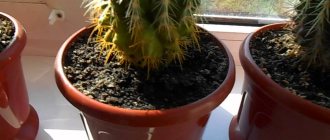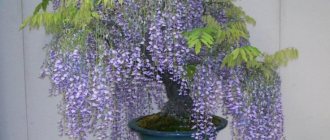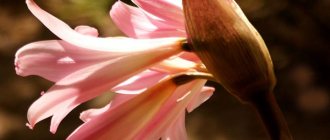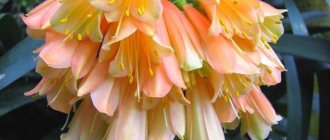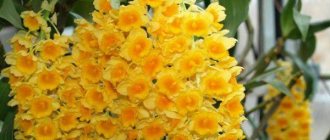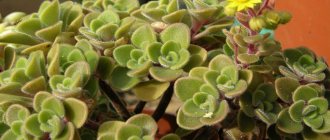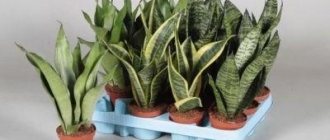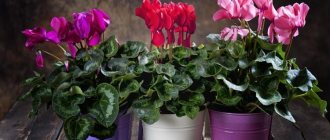Lighting
During growth, the plant prefers bright, diffused light; in summer, direct rays of the sun are allowed only from 11:00 to 15:00.
For normal development, amaryllis requires 16 hours of daylight . During the dormant period, amaryllis bulbs do not need light.
The best place for the plant will be windows facing southwest and southeast. On a south window, the amaryllis will have to be shaded from the midday sun.
During the growth of the peduncle and leaves, the plant must be constantly rotated so that the peduncle does not bend.
Temperature
Temperature conditions during active growth:
- Daytime 20–22° C;
- At night no less than 18° C.
During the dormant period, amaryllis bulbs should be kept in a cool place . The optimal temperature will be about 15° C, the minimum 10° C, and the maximum 18° C. At low temperatures, the bulb may die, and at high temperatures, it may germinate too quickly, not allowing the plant to fully rest.
In summer, it is not advisable to take the flower out of the room, since differences in day and night temperatures in the middle zone can be significant. This plant does not like sudden decreases or increases in temperature, which can lead to a lack of flowering.
This flower requires a period of rest. But it is not always possible to keep a flower in a cold room. In order for amaryllis to successfully overwinter and produce a peduncle in the spring, it can be kept at room temperature 20-22ºС, but in relative dryness. In this case, the flower will not grow in winter.
Main varieties
Modern amaryllis breeding is developing in three directions:
- Search for new varieties or improvement of known ones to increase flower size. These include the following terry varieties: DoubleRoma, Celica, DoubleDragon, etc. Non-double varieties include Ampulo, BlackPearl, Exotica, Moonlight, Matterhorn, WhiteBaby, etc.
- Search for original multi-color colors or add new ones to existing ones. The following interesting specimens were bred in this direction: Charisma, Gervesa, Temptatia, Prelude, Clown, Neon, Pizazz, etc.
- Changing the shape of a flower, creating narrow-petalled varieties, so-called “spiders”. This group includes Grandeur, Spotty, Evergreen, Lima, La Paz, etc. These varieties are inferior to large-flowered amaryllis, but are good in group compositions.
Watering
During flowering, amaryllis needs abundant watering - the soil should be moist, but not waterlogged. Watering frequency – the top layer of soil should dry out slightly between waterings. Water the plant with settled water at room temperature . It is important that water does not get on the bulbs.
When flowering ends, watering is reduced, and after 2 months it is completely stopped.
During this time, the amaryllis loses its leaves, and a dormant period begins, during which the plant does not need to be watered.
After the end of the dormant period, when the peduncle reaches a height of 10 cm (but not earlier!), switch to the normal watering regime, taking into account the temperature and dryness of the air in the room.
If the air in the room is too dry, you can spray the buds a little . It is strictly forbidden to spray flowers, leaves, and bulbs during the dormant period.
When can amaryllis be removed?
Amaryllis are highly valued precisely because their flowering time, by properly regulating the dormant period, can be timed to coincide with almost any desired date. But it is still better to do this from December to April for two reasons. These terms are more natural for this plant. In this case, the bulbs are less depleted and better tolerate this event, which, simply put, occurs for them with the least loss. In this case, your collection will bloom beautifully and almost continuously every year, and the bulbs will recover normally in the spring and summer. In industrial conditions, forcing for cutting is carried out almost year-round.
The soil
For amaryllis, a soil consisting of turf soil (2 parts), peat (1 part), humus (1 part) and sand (1 part) is suitable. The soil acidity indicator should be pH 6.0–6.5.
You can also use a different soil composition for planting this plant. Here are its ingredients:
- Sod land - 2 parts;
- Leaf soil - 2 parts;
- Humus – 1 part;
- Peat – 1 part;
- Washed river sand – 1 part.
Sand can be replaced with leavening agents such as perlite or vermiculite. The specified soil composition will ensure the outflow of excess water into the pan during watering.
Also, to prevent water from stagnating in the soil, a drainage layer is placed at the bottom of the pot. Good drainage is essential to prevent root and bulb rot.
Light and loose soil, slightly acidic or neutral acidity, is suitable for amaryllis. Such soil mixtures for decorative flowering bulbous plants are always on sale. They are easiest to purchase at flower shops or garden centers.
Landing
Before planting, you need to remove all the dark scales from the bulb so that it becomes light green. After this, the bulb is soaked for 30 minutes in a weak solution of potassium permanganate or any fungicide. Then it is dried for a day and planted in nutritious soil.
Step-by-step instructions for replanting amaryllis can be found here.
Fertilizer
During active growth and flowering, fertilizing is carried out once every 10 days. To do this, use a complex liquid fertilizer suitable for flowering plants.
At the end of flowering, fertilizing is reduced, and after the leaves wither, stop completely . Fertilizer application is resumed only with the appearance of flower stalks from the bulb.
They begin to fertilize the soil for amaryllis when flower stalks appear from the bulb in the spring. Use liquid complex fertilizers for flowering plants or special formulations for bulbous plants.
It is important not to overfeed the plants after the leaves form and flowering ends. This species grows leaves after the formation of a peduncle. The plant is fed only with fertilizers for flowering plants, never using formulations for deciduous varieties. This allows you to maximize flowering and reduce the rate of leaf growth.
How to keep amaryllis in summer?
In summer, plants are watered abundantly (but not often!) as needed, and fed once every two weeks. On sunny days, only pots provide shade; you can spray the foliage in the evening or in the morning. It is better not to do this during the daytime, since water droplets can become microlenses and simply burn the leaves, concentrating the sun's rays on them. Amaryllis can also be taken out into the open air - a balcony, an external window sill, or even planted in the garden, protecting the mouth of the bulb from heavy rainfall and excessive moisture in the earthen clod.
Peculiarities
For normal development and abundant flowering of amaryllis, special care rules must be followed during the period of growth and dormancy. Amaryllis is also a poisonous plant and should only be handled with gloves.
Do not forget that amaryllis is a poisonous indoor plant. Do not allow juice to come into contact with skin or food. But don’t rush to get rid of the plant - when growing it, you just need to follow precautions.
Periods of growth and rest
Let's look at how to care for amaryllis at home in different phases. At home, amaryllis is grown as a regular houseplant until late autumn. At this time, it is regularly watered and fed.
After amaryllis blooms, you need to remove the flower stalks. There is no need to touch the leaves - they will be a source of nutrients for the bulb.
In order for amaryllis to bloom in winter, the bulbs need to be provided with a period of rest . To do this, from August you need to reduce watering and stop fertilizing. After three weeks, watering should also be stopped. The leaves should turn yellow and wither on their own, after which they need to be cut to a height of 5 cm from the bulb.
In September and early October, the bulbs are planted in a pot and stored in a dark, dry and cool (13–15° C) place. The dormant period will begin when there are no green leaves left on the plant and will last 6-8 weeks.
Around November, the pot with the plant is placed in a lighted place and begins to be watered regularly. From this point on, the period of growth begins again.
Before and after flowering, keep the soil moist and rotate the plant constantly to promote even growth. During this period, the optimal temperature will be 13–18° C. 4–8 weeks after watering is resumed, the amaryllis should bloom.
Amaryllis blooming
The flowering period of amaryllis occurs in late autumn or early winter. A flowering plant throws out a powerful peduncle, at the end of which there is an inflorescence. Usually during flowering the plant has no leaves. Sometimes 1 pair of leaves grows along with the peduncle.
With optimal care, amaryllis blooms once a year. However, you can get flowers twice a year without damaging the plant. Adult specimens with a bulb diameter of at least 5 cm are suitable for this. They will bloom in the summer, subject to regular feeding in the spring.
To induce natural flowering of amaryllis in the summer, you need to create an additional dormant period for it. To do this, you need to move it from a lighted place to a shaded place, away from the window.
Watering is reduced by 2-3 weeks. After a 2-week stay in the shade, its leaves gradually die off, and a peduncle grows from the top of the bulb.
After the formation of a peduncle, the plant begins to be watered as usual. Now it can be transferred to the windowsill, where it will soon bloom.
When will my amaryllis bloom?
A powerful, well-developed bulb begins to grow or throws out flower stalks almost immediately after planting. And within seven to eight weeks, depending on the variety and variety of amaryllis, you will receive one or two powerful peduncles, each of which will have three to five, and sometimes six beautiful flowers. To prolong their flowering, keep the pot in a fairly cool place and out of direct sunlight. If a third flower arrow suddenly appears, it is better to break it off immediately at the base and not allow the bulb to bloom a third time, since flowering three times greatly depletes the bulb. Immediately after the first flower opens, the peduncle can be safely cut off and placed in water in a narrow, tall vase; it is advisable to refresh the water every day. The duration of flowering of each peduncle in the cut and on the bulb is almost the same, but at the same time you significantly reduce the depletion of the bulbs and often stimulate the appearance of a new peduncle.
Diseases
Amaryllis can be affected by fungal infections, such as gray mold. Signs of infection: brown spots or stripes on flowers, stems or bulbs, or a grayish velvety coating on the leaves.
As a rule, the disease is caused by too humid air and waterlogging of the soil.
The causative agents of this disease live in the soil, so the diseased plant must be replanted. In addition, they are treated with special preparations - fungicides.
The plant can become infected with thrips or aphids . Signs: leaves turn yellow and become deformed.
Small reddish spots may appear when infested with mites. Treatment with insecticides, which must be carried out several times, will help in pest control.
What to do if something goes wrong - tips and warnings
Sometimes, even with good care, amaryllis refuses to bloom. There may be several reasons in this case:
- the pot is too wide, allowing the plant to spend all its energy on growing “babies” rather than flowering;
- lack of nutrients in the soil;
- poor lighting and unsuitable temperature conditions during the growing season;
- lack of a rest phase;
- infection by fungi and parasites.
The following problems may arise during cultivation:
- Wilting and pale or yellowing of leaves, blackening of flowers. This can happen to flowers placed in extremely damp and cold areas. The solution to the problem will be the normalization of temperature and watering conditions.
- Slow growth against the backdrop of falling leaves. Such symptoms appear during an amaryllis bug infection. To get rid of aphids, it is recommended to wipe the leaves with a solution of potassium soap.
- Light markings on leaves and stems. Sign of a mealybug. Eliminated by wet wiping the leaves and spraying with insecticides.
- Brown spots on leaves. They are caused by a pest - the false scale insect. To heal the plant, you need to prepare a solution of laundry soap and wipe the affected areas with it.
- Bulb rotting. Indicates the presence of a narcissus fly or onion mite. Preventive measures are required before planting, namely disinfection of the soil, bulb, and pot.
If the bulb rots, you can try to revive it as follows:
- Remove damaged areas with a knife.
- Lubricate the cut areas with an antiseptic.
- Dry.
- Process in Maxim.
- Place in a dark place for two days.
- Immediately before planting, remove dried parts.
Even an inexperienced beginner can handle caring for amaryllis. It is enough just to provide it with optimal conditions in accordance with the characteristics of growth and development, as well as to have a small amount of knowledge about planting and replanting the plant. It would be useful to familiarize yourself with the main diseases to which the flower is susceptible and methods of treating them. About diseases, pests and treatment of amaryllis is written here.
You may be interested in our articles about the amaryllis belladonna variety and about other varieties of the plant, as well as publications about caring for the plant in winter. Also read about the differences between amaryllis and hippeastrum.
Problems
- The flowers are turning pale . Reason: direct sunlight;
- The flowers darken or even turn black. Reason: damp air and low room temperature;
- The leaves become pale and the flowers droop. Reason: insufficient watering;
- The leaves are turning yellow . Causes: damage by thrips or aphids, waterlogging of the soil;
- The bulbs are getting smaller. Reasons: a large number of children, lack of lighting, abundant flowering;
- The plant does not bloom . Reasons: improper care, too short or no rest period, deep planting of the bulb, damage to the root system. The bulb will not have enough strength to release a peduncle if there is a lack of heat, light, fertile soil, drainage and sufficient watering. During the dormant period, the bulb accumulates strength for flowering.
Reproduction
Amaryllis can be propagated by pups separated from the mother bulb and by seeds. Before transplanting amaryllis, you need to choose the appropriate method.
Branch of daughter bulbs
This is the simplest and most common method. The grown children are separated from the mother plant during spring transplantation .
First, they are grown in small containers with a sand-perlite mixture or sphagnum, and then transplanted.
In this case, the composition of the soil, the height of planting the bulb, and the capacity of the pot should be the same as when transplanting an adult plant. Young bulbs grow quickly and bloom within 2–3 years.
Amaryllis from seeds at home
Growing amaryllis at home is a rather long, labor-intensive and unreliable method. To obtain seeds, pollen is transferred from one plant to another with a brush. Amaryllis seeds ripen for about a month, after which they are planted in the soil and watered abundantly.
Shoots should appear in a month. Grown young plants are planted one at a time in separate small pots. Amaryllis grown from seeds bloom only in the 7th year.
How to distinguish amaryllis from hippeastrum
Due to its external similarity, hippeastrum is often confused with amaryllis. But these two plants are united only by belonging to the same family - amaryllis.
Plants have different origins. The homeland of the beautiful Amaryllis (the only one of its kind) is South Africa, and the hippeastrum was brought from the tropics and subtropics of South America and has about a hundred species.
The main difference between plants from each other is the structure of the peduncle stem . In amaryllis it is homogeneous and dense, and therefore is capable of bearing a large number of fragrant flowers (6-12), and on the hollow arrow of the hippeastrum up to 6 flowers that have no smell are formed. Other differences include the following:
- Hippeastrum flowers are larger. Their size is 12-15 cm, and for amaryllis the maximum is 8 cm.
- The flowering period of amaryllis is leafless, while hippeastrum has a belt-shaped leaf that grows during flowering.
- Hippeastrum is grown exclusively as a houseplant, and amaryllis can be planted in open ground on the south side of the site.
Transfer
Amaryllis is a perennial plant, so there is no need to replant it every year. It will be enough just to replace the top layer of soil. This must be done very carefully so as not to damage the root system. In addition, the bulb cannot be buried above the previous soil level.
Usually amaryllis are replanted every 2–4 years , or when it is necessary to separate the children from the mother bulb for propagation.
The best time to transplant amaryllis at home is 3-5 weeks after flowering has ended.
This is explained by the fact that the bulb greatly decreases in size during flowering due to the consumption of nutrients contained in it.
When replanting, select a pot with a diameter equal to the bulb plus 1.5–2.0 cm on all sides - in cramped containers, amaryllis begin to bloom faster and more abundantly.
Dried and withered outer scales are removed from faded amaryllis, and bad roots are removed from the bulb and the children with roots are separated.
If the bulb has no roots at all, it can still be replanted - the roots will grow in 4-6 weeks. A drainage layer is placed on the bottom - expanded clay, broken shards, gravel, and it is advisable to pour a little sand under the bulb. The soil is taken of the same composition (see above). The bulb is buried in the ground half or 2/3 of its height.
Breeding
Let's look at this in more detail. There are no problems with amaryllis propagation. According to experienced flower growers, this can be done in the following ways:
- Seminal. To obtain high-quality planting material, you need to use a brush to transfer pollen from the stamen to the pistil of various plants. After about 30 days, the seeds will be fully ripe and ready for sowing. They need to be planted immediately after collection, since over time their properties and quality decrease, as a result of which the percentage of germination drops significantly. The best substrate for planting is composed of humus and leaf soil mixed in a ratio of 1 to 2. The seeds are deepened 5 millimeters into the soil and moistened with a spray bottle. Next, the flower pots are placed in a room in which a constant air temperature is maintained ranging from 20 to 24 degrees Celsius. After the first shoots appear, the plants can be replanted.
- Vegetative propagation. Amaryllis babies are separated from the mother bush and planted in the ground until they germinate. As soon as they send out shoots, they are planted in pots.
- Dividing the bulb. The upper part is cut off along with the stem, after which the remaining part of the body is divided into four equal parts, which are separated from each other by knitting needles. Containers with bulbs should be kept at a temperature of 24-28 degrees under good lighting, keeping the soil constantly moist. After about a year, the flowers can be replanted.
According to many experts, the most effective way to propagate amaryllis is vegetatively or by dividing the bulb. Seed is quite problematic and does not always allow you to get the desired result.
Description of the plant and species
Amaryllis is a bulbous flowering plant native to South Africa. It has a large pear-shaped bulb, the diameter of which can reach 10 cm.
The leaves of the plant are narrow and long, reaching 30 cm in length. Amaryllis blooms in late autumn or early winter. The flowers are large, there are up to 12 of them on one peduncle. The peduncle of the plant is long, up to 40 cm, juicy and fleshy.
Until recently, the Amaryllis belladonna species was considered the only one of its kind. Today, another species of this genus has been found - Amaryllis Paradisicola.
Amaryllis belladonna is a very popular plant in indoor floriculture. Thanks to its compact size and amazingly beautiful flowers, this species is common in the collections of flowering plant lovers almost everywhere. Wild flowers have pink, red and even purple tints.
This species gave rise to many varieties, distinguished by unusual coloring, flower size and petal shape. There are large-flowered, variegated and narrow-petaled varieties. Here are some popular amaryllis varieties:
- “Exotica” is a large-flowered variety;
- "Minerva" - a variety with variegated striped petals;
- "Exotic Star" is a narrow-petalled variety.
Amaryllis Paradisicola differs from the previous species in the large number of flowers in the inflorescence. There can be up to 21 of them. All flowers of the species have a uniform pink tint and a pleasant aroma. Not common in indoor floriculture.
Distinctive features of amaryllis
To make it easier to discern which flower is hippeastrum or amaryllis in front of you, just remember the distinctive features of the latter.
- Its leaves are quite long, up to half a meter, and narrow (2.5 centimeters). Painted dark green.
- It has a round, slightly elongated bulb, with a diameter of approximately 4 or 5 centimeters.
- Beautiful funnel-shaped flowers are attached to dense and long (50–60 centimeters) peduncles. Very large (diameter 10–12 centimeters) and fragrant flowers are collected in an umbrella, where there are up to 12 of them. They can be painted either white or bright pink. The blooming flower fades after 6 days, and the flowering itself lasts from April to May.
